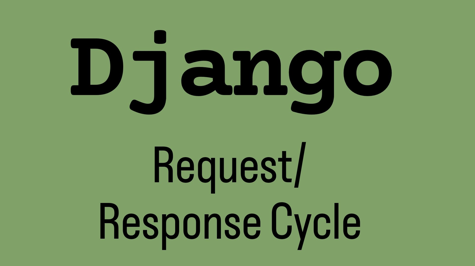In Django, a request/response cycle is the process by which a client (typically a web browser) sends an HTTP request to a server running Django, and the server sends an HTTP response back to the client. This process is handled by the Django web framework, which uses a routing system to map URLs to specific views (Python functions) that handle the request and generate the response. The views can also interact with the model to perform database operations or other tasks before generating the response. The response is then sent back to the client, which can display the content or process it in some other way.
In more detail, the request/response cycle in Django works as follows:
- A client (e.g. a web browser) sends an HTTP request to a server running Django. The request contains information such as the URL, the HTTP method (e.g. GET, POST), and any data sent by the client (e.g. form data).
- Django's URL dispatcher examines the request's URL and maps it to the appropriate view function. This is done using a URLconf, which is a set of patterns that match URLs to views.
- The view function is called with the request as an argument, and it performs any necessary logic to generate a response. This may include interacting with the model to retrieve or update data, performing calculations, or other tasks.
- The view function returns an HTTP response, which contains the content that will be sent back to the client. The response can include HTML, JSON, XML, or other types of data.
- Django sends the response back to the client, which can then display or process the content as needed.
It's worth noting that the request/response cycle can also include middleware, which are components that can process the request or response at various points in the cycle. Middleware can be used to perform tasks such as authentication, caching, or handling exceptions.
Here is an example of a simple view function in Django that handles a GET request and returns a response containing plain text:
from django.http import HttpResponse
def hello(request):
return HttpResponse("Hello, World!")
This view function can be mapped to a URL using a URLconf. For example, in a file named urls.py, you could have the following:
from django.urls import path
from . import views
urlpatterns = [
path('hello/', views.hello, name='hello'),
]
This maps the URL /hello/ to the hello View function. When a client sends a GET request to this URL, the hello view function will be called and the response "Hello, World!" will be sent back.
In real-world scenarios, the views will have more complex logic and interact with the models to perform database operations and generate dynamic responses. Middleware can also be added to the project to perform additional operations on the request and response such as authentication, logging, etc.
Please check our Django Course



